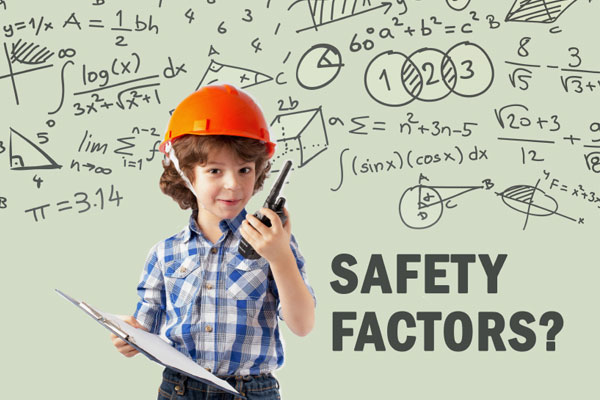Top Admin Apps for Construction Teams
Managing a construction project involves juggling many tasks, from scheduling...

The construction industry is plagued with risks left and right. Construction sites are notoriously dangerous because they have a combination of manual tasks, heavy equipment, and moving vehicles that create health and safety risks for everyone that visit the location. The International Labour Organisation (ILO) estimates that 1001 workers died in 2019 due to work-related injuries at various construction sites across Australia.
Across Europe, there were 1000 fatalities, and across America, there were 1500. Moreover, construction sites account for 20% of all fatal injuries globally. Hence, knowing the common health and safety risks at a construction site is imperative. This blog will discuss a construction site’s top health and safety hazards.
Falls, trips or slips accounted for almost 33.5% of all non-fatal injuries in 2018-2019 across the globe. The prime sources of risk in a construction site include loose cables, uneven surfaces, unchecked equipment left on the ground or slippery surfaces. The prevention begins by ensuring that precise work management occurs, where every employee is aware of the safety protocols. Hence, equipment and tools must be kept securely after usage. Pathways should be cleared and kept debris free. Most importantly, all personnel at the construction site should wear proper PPE and attend regular safety meetings so that everyone is updated on the latest procedures.

Demolition work and building construction both require employees to work at great heights. Health and Safety Executive (HSE) statistics reveal that falling from a great height was the significant cause of most fatal injuries. The prime sources of risk include loose equipment stored on raised pathways or roofs, unprotected edges, lack of guardrails or safety nets, unsecured ladders, or improper scaffolding. Prevention begins by understanding the recommendations from various regulatory authorities and conducting risk assessments so that adequate preventive measures can be put in place. All work that needs to take place on a height must be properly planned, controlled, supervised and performed within the scope of the safety procedures. Additionally, the workforce must be fully informed of all the procedures and should be appropriately trained to utilise the equipment. Preventive measures should be introduced to reduce risks to a minimum, including guardrails, safety nets, or scaffolds.
There is constant movement of machinery, equipment and vehicles at a construction site. This increases the risks associated with a prime source of risks such as overhead lifting equipment, heavy-duty vehicles, poor lighting conditions, little space for workers to manoeuvre, and working close to moving objects. To prevent such risks from escalating, work area management should be clearly defined, and all equipment should be utilised within relevant safety guidelines. The workforce should wear protective clothing, such as reflective jackets so that their visibility increases or helmets to protect them from falling objects. Lastly, it is imperative to train your staff so that they remain vigilant and aware of their surroundings.
If you need construction health and safety software, you can contact us.
The nerves and blood vessels of workers can get severely damaged due to the repetitive vibrations caused by power tools. In fact, a common injury in the construction industry is Hand And Vibration Syndrome (HAVS), which negatively impacts the grip strength of workers that have to regularly use power tools. The source of risks includes vibrating power tools, ground working equipment or handheld power tools. Prevention begins with a risk assessment to determine if any feasible alternatives are available and if handheld tools can be avoided. For example, mechanical or automated equipment can be suitable for a few tasks. If there is no substitution for power tools, they must be well maintained, and the duration of usage should be very short. Additionally, workers should be provided specific training on utilising this equipment to wear the proper PPE and hold the correct posture.

The high noise levels at construction sites prove to be a significant safety risk. Additionally, excessive repetitive noise above 85db can cause significant hearing impairment, ultimately leading to deafness. In fact, according to the ILO, 35% of all construction workers have experienced deterioration in their hearing or are undergoing substantial hearing loss. Sources of risk include heavy-duty vehicles, groundwork equipment or power tools. Prevention begins by conducting a comprehensive and in-depth noise risk assessment and providing the appropriate PPE in the form of headphones or soundproofing gear to reduce the intensity of sound waves. Additionally, the crew must be trained to wear PPE when they are working in a high-noise level environment.
Handling heavy loads and regularly lifting in incorrect posture can lead to severe injuries, including Musculoskeletal Disorder (MSDS). MSDS can affect the back and joints, weakening both muscles and tissues. Primary sources of risk include poor lifting posture and repetitive heavy lifting. Training is the first and most essential step in risk mitigation, where all crew members should be taught posture correction.
Also read ” HSE Software For Construction Companies”
A construction site is fraught with safety risks. Employers need to conduct an in-depth risk assessment to identify the principal and primary sources of risks, going on to train the crew members to use adequate PPE and techniques while conducting their daily activities.
Comments